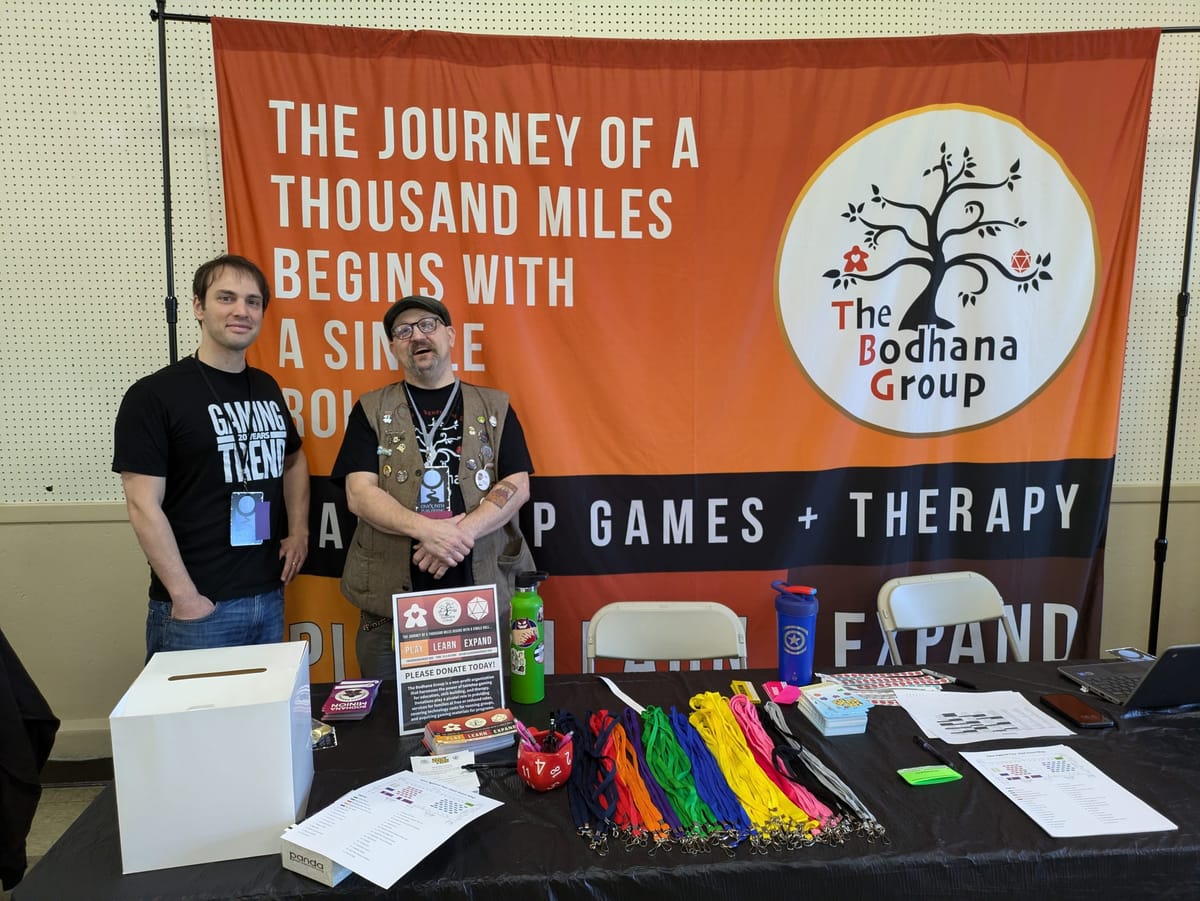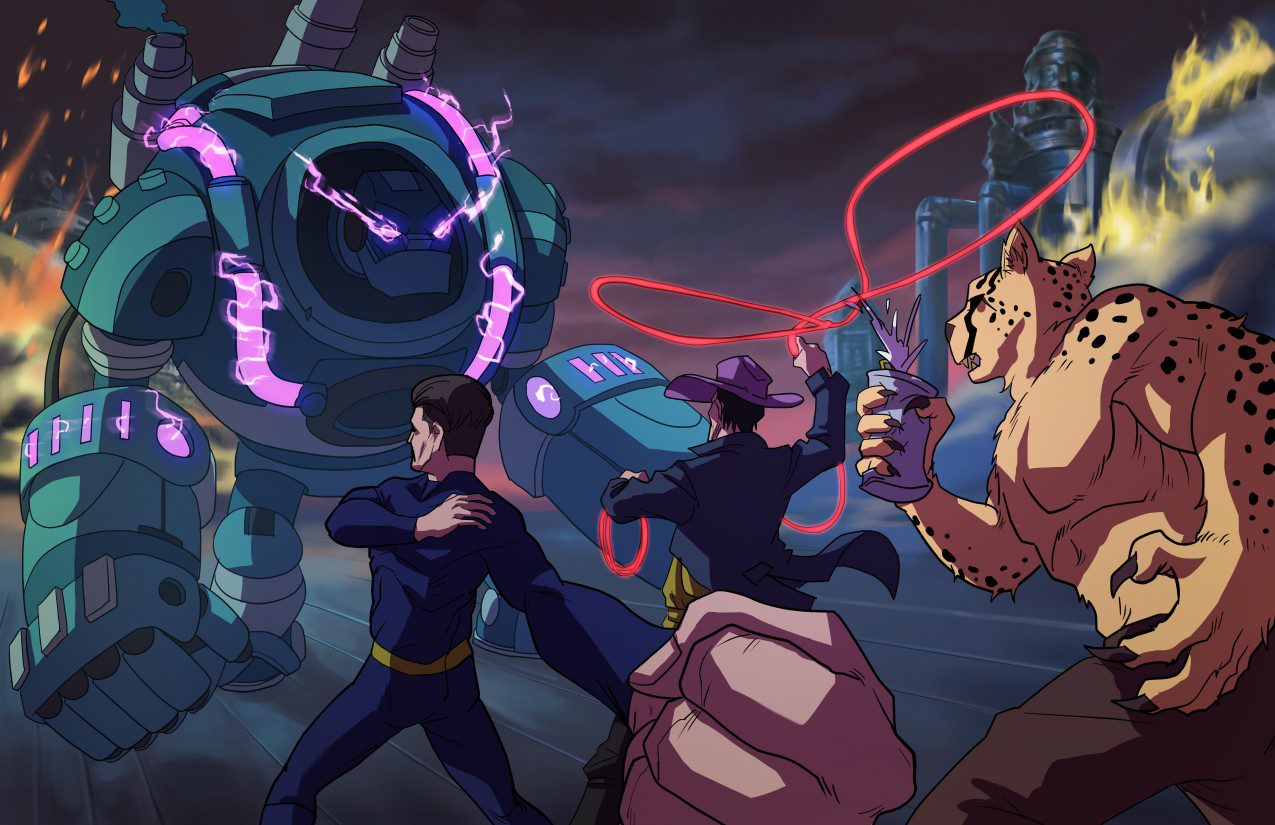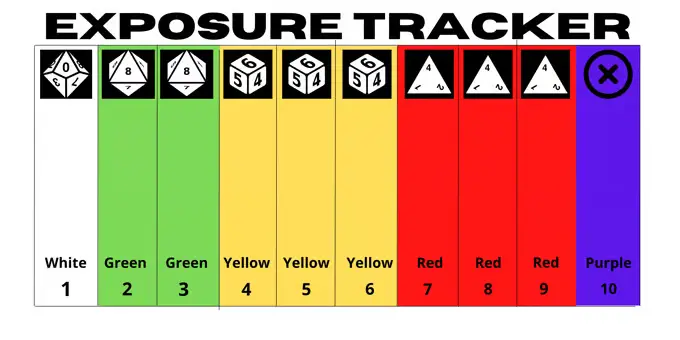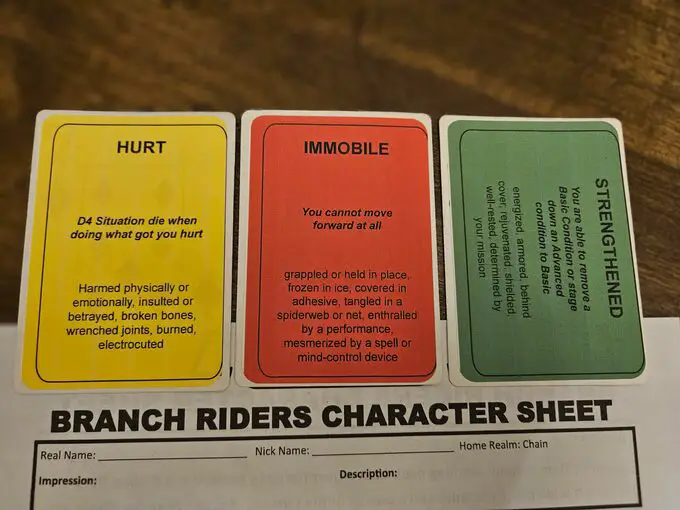
Pennsylvania’s Bodhana Group is one of the first and only organizations to examine the clinical impacts of tabletop RPGs. Even before reading their literature and research on the topic, you’ll find a lot of parallels between running tabletop RPGs and modern talk therapy. Both contain innumerable soft skills that can be written and taught, but above all must be experienced for you to start seeing the nuances. Both function off of social interactions: one practitioner guiding a person or group through specific challenges, providing guard rails and intention to make sure the group approaches those situations in a healthy way, mindful of how they should proceed and what they’re learning. The Bodhana Group has focused on these practices, providing a training course for practitioners, research, and stands as an ongoing force for change by putting these principles into practice in groups.
If it seems outlandish to you that someone would combine a “game” with therapy, I can assure you from decades of experience that the two are more alike than you might like to think. Off the top of my head I can recall numerous times when my home games started to dig up serious traumas, issues with group dynamics, or deep seated fears with my players. These events were never intentional, and often we didn’t know how to approach them properly, without the benefit of training. When you pretend to do something, even something you consciously know is not real, your subconscious will deliver an emotional response. Whether or not you lean into these experiences deliberately, you will be surprised at how much you uncover about yourself and your group at the table. It was only natural that someone would study and harness that potential; enter The Bodhana Group.
Nearly a year ago, I interviewed Jack Berkenstock, TBG’s Executive Director, on their practices and outcomes. You can watch that interview below, and check their website for more resources on their history and research. I follow up having attended SAVE Against Fear, TBG’s annual gathering that serves as both professional conference for therapeutic practitioners and gaming convention. Through that process I got a deeper look at how they approach TTRPGs as therapy, and the upcoming Branch Riders, a game built to put those principles into practice. The game blends RPG advice with therapeutic approaches, giving you the tools to meet both needs at once.
Having read through their research, played a full adventure with Branch Rider’s and read through the game’s materials, I can discuss these areas more completely. Branch Rider’s successful Kickstarter is planned to release the core book in summer of 2025.
The Therapeutic Model
While forms of TTRPGs have existed for a few hundred years, their modern turn in popular consciousness is only a few decades old. Much younger if you consider their growth since Critical Role and Stranger Things is less than 10 years old. There has been some research on the general positive benefits RPGs pose to social dynamics, but TBG’s study is the first I’ve seen that actively studies them when approached with a therapeutic model in mind. That research showed qualitative, measurable improvements for individuals experiencing a range of anxiety and social disorders.
The approach as applied to RPGs bases itself in Cognitive Behavioral Therapy, a practice which (if you’ll allow me to oversimplify) tasks participants with identifying and challenging one’s behaviors or feelings and their responses to those situations. In a way, this is the entire point of RPGs; the GM presents you with a challenge in a safe, fictional environment, and you navigate those challenges with a group. Where a home game would probably go out of its way to avoid subjects that elicit particular discomfort, the Bodhana model might do the opposite, approaching those areas of discomfort in a safe way, by crafting a challenge that embodies it and giving you an opportunity to overcome it. To that end, there is an element of Exposure therapy, an element of CBT by which you choose to place yourself in a safe environment with an element that triggers a phobia. If you have an irrational fear of something and encounter it in a way that poses no direct threat, you can train your nervous system to recognize that it isn’t being harmed, riding out the stress response and easing your way into comfort.
This has applications with anxiety disorders and social anxiety, but also general healthy approaches to group dynamics. A game of Branch Riders will involve a group of people from wildly different backgrounds placed in an uncomfortable setting with a common goal that they must navigate. The back and forth replicates much of what you’ll find in day to day life, but without the same chances for judgment or consequences for failure. Those consequences exist, but in a managed and fictional environment that gives you chances to experiment freely and review your behavior.
The adventure I played was run by someone who also practices at a residential treatment facility for juveniles. They were people who hadn’t all gotten the opportunity for play when they were young, never getting the same chance to explore a safe environment or healthy group. When given the opportunity, many of them shine, leaning into the skills they might not have been trusted to develop. There’s a natural community to be found at the gaming table, and it’s high time that potential for good was leveraged/
Branch Riders

Having gotten to play the game and read through the current materials for it, I am left with a lot of positive impressions. This will not constitute a review of the game, because the game is not quite finished. The vast majority, maybe even all, of the rules and text are complete. The book lacks the layout and art that a core book would have, and there may be more changes intended before the time of publication.
The setting tasks characters known as Branch Riders who travel various realms seeking out and cleansing the Blight, a force that corrupts the minds and bodies of everything it touches. The Blight can act overtly, by creating monsters, or subtly, growing its influence by sowing doubt and discord among the realms. Those realms cover a variety of genre and power types, from superheroes to steampunk to wild west and fantasy and more. Each realm covers not only genre and aesthetics, but therapeutic skills that GMs can use to challenge players.
The realms are linked but separate, and Branch Riders must be careful not to expose themselves to locals. Revealing the secrets of the Blight could do more harm than good, and signal to the Blight that intruders are nearby. On its own, this carries a lot of messages for players: in life you are often outside of your comfort zone. You will have to learn to abide by the rules of new realms without losing yourself or your values. It’s a constant negotiation, and one that plays into the game’s best mechanical strength via the Exposure tracker.

Characters and the overall game are fairly simple: you will have dice from d4 to d12s in a few Approaches, covering Creative, Forceful, Knowledgeable, Observant, and Social. You will choose to distribute similar values among 10 of 11 skills. One skill is always missing to teach you that it’s not a character flaw not to be able to do everything. Relying on a teammate isn’t weakness, it’s a necessity of life, and learning to do it at all is a strength. You can also acquire Gifts from various realms, magical items or abilities that you can use to affect yourself, other objects or an area at different difficulties.
A basic task asks you to roll dice combining the value for your Approach, Skill, and the Exposure die. 0 successes (a value of 4-6) is a failure, 1 lets you choose to succeed with a cost or fail forward, giving you agency in the roll. 2 successes is a standard success, while 3 is a critical success. The Exposure tracker is my favorite part of this game, and one I intend to steal wholecloth at the first opportunity. Representing the Blight’s awareness of your group and its eccentricities, the die starts out high but reduces along its track as you take overtly strange or supernatural actions. You will have to be careful and take time to hide out if you step too far, and total exposure eliminates the die, meaning you will roll one die fewer for all tasks. This accomplishes a few things, the most basic of which is reinforcing the feeling of espionage. The Blight is ever-present, and you will need to be careful to subvert it and keep the balance of the realms. More complicated is how it replicates the feeling of social anxiety: the constant expectations to conform and fear of nebulous but consequence for coming out of your shell too unreservedly. Branch Riders isn’t trying to punish you for being yourself, it’s trying to signal that you need to do so with some consideration and care or you will risk alienating yourself even further.

Equipment grant an automatic success where relevant and otherwise trigger a roll. The game doesn’t use hit point, but condition cards for failures or damage. They start at yellow and switch to red if they become more severe. Three red conditions and you are taken out of an encounter until you can heal. Out of everything in Branch Riders, the conditions are the one area I might find room for criticism. The goal is to make them readable across a table, giving the GM a quick view of how everyone is doing. 0-3 cards of a few colors makes sense. The issue comes in with the specificity of those conditions. They vary a lot in triggers and consequences, and can be harder to track when everyone is passing them around. There are also positive conditions gained from in game effects.
From my brief time with the system, I can say that it’s a great pick for new players and the therapy groups it’s targeted for. Unless I was making that introduction or playing with children I am unlikely to use this for my home game, but that’s only because my games lean more into mechanically dense rules for tactical encounters. Branch Riders lets you improve your skills, attributes, and gifts, but is generally disinterested in long-term character growth. That’s not a flaw so much as it is a deliberate design choice.
In Conclusion
The Bodhana Group and Branch Riders represent a responsible step forward in how we can communicate with one another via RPGs. Where many people have come about these revelations accidentally or without purpose, I’m glad to see someone taking this seriously and moving the conversation forward. You can track the group’s work at its website and follow Branch Riders updates at its Kickstarter page.
